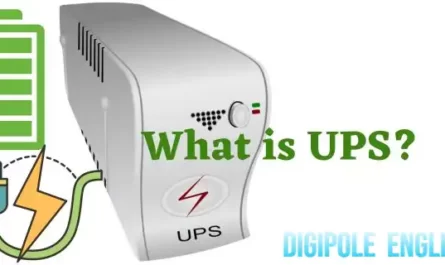Would you like to know What is VoLTE and what is VoLTE full form? Here I have discussed VoLTE network technology in simple terms and I hope it will help make you understand in an easy way. In today’s digital era, where speed is given the highest priority, in its development, the developers are constantly trying for their betterment and whose form we keep getting from time to time.
VoLTE is just such an advanced technology that improves the quality and efficiency of the call to give a better call experience than the traditional call.
So, if you wonder to know about what exactly VoLTE is, and also know the full form of VoLTE, as well as how does it work? this article will help you a lot.
What is VoLTE?
VoLTE (Voice over LTE) is one such digital packet technology designed for hi quality voice calls over 4G LTE networks. It uses LTE networks to route voice traffic and transmit data, providing better audio quality than traditional phone calls made over a standard voice network.
It uses IMS (IP Multimedia Subsystem) technology. VoLTE is a digital packet voice service delivered over IP through an LTE access network.
VoLTE full form
The full form of VoLTE is Voice over LTE or Voice over Long-Term Evolution. It provides a high-speed wireless communication on LTE standard using mobile phones and data terminals. Due to which the quality of voice calls increases many times.
It reduces the latency during data transmission. VoLTE provides three times faster and clearer voice and data capacity than traditional 3G UMTS.

How does VoLTE work?
It is now clear to us that VoLTE makes voice calls to be transmitted over the Long-Term Evolution (LTE) network and provides high-speed wireless communication standards using 4G networks.
Now, it is time to take a closer look on to know how it works really. It follows some essential steps while it works.
Here are the steps that it follows while it works:
- IP Multimedia Subsystem (IMS) Framework:
It works on the IP Multimedia Sub-system (IMS) framework, which is empowered it to deliver the multimedia as data flows using a common IP /(Internet Protocol) network. IMS enables ubiquitous multimedia access and support of various services, including voice calls.
- Packet Switching:
Unlike traditional circuit-switched voice calls, VoLTE uses packet switching to transmit voice data over the LTE network. Voice calls are converted into packets of information and sent over the full data stream.
- Seamless Handover:
It also supports seamless handover between LTE and other networks, such as 3G/2G which makes uninterrupted voice calls even when switching between different network technologies.
- Simultaneous Voice and Data:
Simultaneous Voice and Data: One of the significant parts of it is that it allows you to use data services while on a call. This is not possible with traditional circuit-switched calls.
With VoLTE, you can make a voice call while using data services, such as browsing the internet or using apps, without any interruption.
- Faster Call Setup:
This typically results in faster call setup as compared to traditional voice calls, which can enhance the end-user experience.
- Compatibility:
It is backward compatible with traditional circuit-switched networks. If VoLTE is not available, your phone will automatically switch to the older network technology for voice calls.
What is the difference between LTE and VoLTE?
Ok, now let’s come to know how these two technologies are different from each other and how it better than each other.
LTE/ VoLTE both technologies are related to mobile communication, but they serve different purposes and have distinct characteristics. Let’s look at the key differences between them:
About LTE :
It is a high-speed data network used for mobile internet performance over 4G technology which is significantly improved in data speeds and of capacity as compared to its predecessor, or earlier 3G technology.
LTEs are mainly concentrates on delivering fast and efficient data services, which are responsible for enabling activities like browsing the internet, streaming videos, and downloading files.
Key Features of LTE:
- It is designed for high-speed data transmission.
- It is Optimized for delivering fast internet access.
- It Supports data-intensive applications and services.
- It is Primarily used for browsing, streaming, and downloading.
About VoLTE :
VoLTE on the other is specifically designed in intense to improve voice communication over LTE network infrastructure. Initially, voice calls were managed separately using with older circuit-switched networks system, which were not as efficient for transmitting data and often led to lower voice quality. It aims to provide high-quality voice calls using the same LTE network used for data services.
Key Features of VoLTE:
- It is designed to enhance voice quality and call reliability.
- It transmits voice calls as data packets over the LTE network.
- It allows for simultaneous voice and data usage.
- It provides faster call setup and improved call quality.
Here is given a table that will help you better understand the differences between them:
| Aspect | LTE (Long-Term Evolution) | VoLTE (Voice over Long-Term Evolution) |
|---|---|---|
| Definition | 4G technology for high-speed data services | Technology for high-quality voice calls |
| Focus | Data services, internet access, streaming | Enhanced voice communication |
| Voice Calls | Uses traditional circuit-switched networks | Not optimized for the best voice quality |
| Data Transmission | Uses data packets over an LTE network | Voice transmitted as data packets |
| Call Quality | Voice and data on the same LTE network | Optimized for high-quality voice calls |
| Call Setup Time | Standard setup time | Faster call setup time |
| Simultaneous Use | Data and voice on separate networks | Simultaneous use of data and voice |
| Network Type | Data-only 4G network | Voice and data on same LTE network |
| Usage Example | Browsing, streaming, downloading | Making voice calls with better quality |
Conclusion
Voice over LTE (VoLTE) has played a significant role in making better mobile communication or high-quality voice calls over the 4G network. It provides enhanced clarity and reduced extra noise as compared to voice calls on 2G or 3G networks.
It improves the user experience as well as enables faster call setup and efficient network resources. With this advanced technology, especially mobile users have benefited from infinite voice and data connectivity on a single network.
Read Also
What is HDD full form in a computer?
What is SSD? SSD full form and their different types
- What is a Compiler?Difference between Compiler/Interpreter - November 27, 2023
- What is system software? How it works and its types - November 26, 2023
- Why website does not rank despite good SEO? - November 25, 2023


